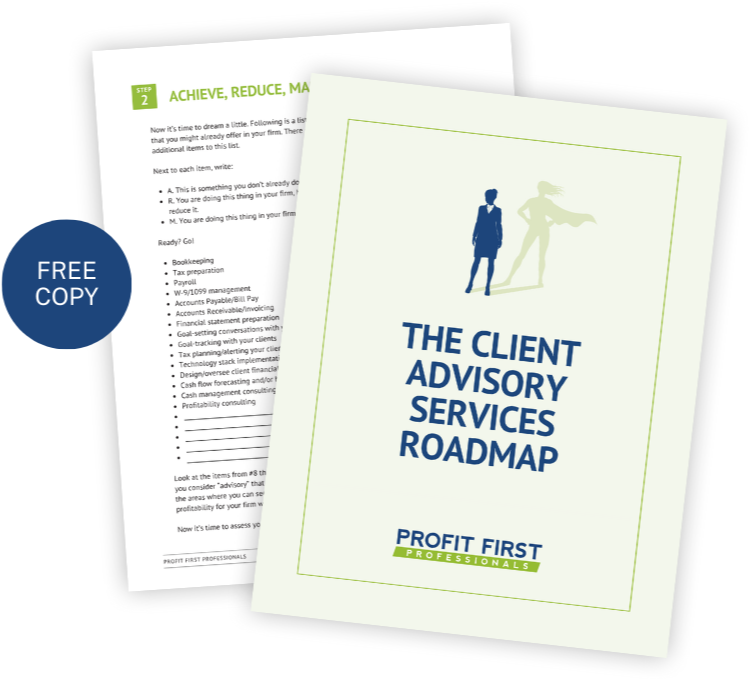- Leverage debt to strategically improve your business’s profitability (this is the “good” debt), or
- Use a debt bridge to cover expenses that exceed your business’s income (this is the “bad” debt, especially through the lens of Profit First).
Important disclaimer
Although we’ve identified “good” debt and “bad” debt here, as a business owner you alone are responsible for making decisions about how to use debt in your business. In other words, don’t take our word for it; speak to your own trusted advisor before making decisions that will impact your business’s financial health.A process to properly – and profitably – leverage debt From a Profit First perspective, there is a proper method to approach debt leverage, and that is through the following six-step process:
- Conduct a 12-month lookback Profit Assessment on your business and make note of your current dollar amounts and Current Allocation Percentages (CAPs). Use the most current numbers you have available. This doesn’t have to be 100% accurate; close enough is good enough.
- Add the debt you plan to incur to the Operating Expenses on the assessment you conducted above.
- If you are taking out a loan that will be repaid over a number of years, add the annual repayment amount including interest to this field.
- If you are planning to add an expense that won’t require a loan, add the annual amount of the expense to this field instead.
- Calculate your new CAPs and make a note of the difference between the CAP for the assessment you conducted in step 1 and the one you conducted in step 2.
- Now we’re going to do some reverse engineering of your Top Line Revenue.
- First, determine what your Top Line Revenue needs to be to bring your CAP from Step 3 back to what it was in Step 1.
- Now, determine what your Top Line Revenue needs to be to hit your TARGET Allocation Percentage (TAP) for Profit.
- The difference between your current Top Line Revenue (from step 1) and the Top Line Revenue you calculated in step 4a is the minimum amount of revenue this investment needs to generate to “break even” on your investment. And the difference between your Top Line Revenue from step 1 and that from step 4b is the amount the investment needs to generate to give you an ROI.
- Set benchmarks for revenue increases and targets for hitting them. This is the most important step of the whole process. Without benchmarks for realizing a return on the debt incurred and targets for hitting them, your debt leverage will become a debt bridge. This step puts a plan into place for “pulling the plug” on the debt if it’s not generating the return you expected.
As you move through this process, it’s possible the calculations will show you moving into a new Real Revenue tier, which will lead to a change in your Target Allocation Percentages. This math can get a little tricky, but Profit First Professionals have access to a tool that will streamline the calculations.
Business growth without debt
As mentioned at the beginning of the series, many people believe that Profit First = Debt Bad. And although we’ve talked about how to properly leverage debt in this article, it’s important to note that the Profit First methodology does not advocate incurring debt…even the “good” kind.
Using debt leverage can speed up your profitability goals and help you take advantage of opportunities that might disappear if you don’t act quickly. For normal, sustainable business growth, though, your best bet is to open a Business Growth and Development account and allocate to that account regularly. You will then use the funds in this account to “finance” your own business growth sustainably and without the risk of over-leveraging your business.
Keeping it all in balance
Monitoring your business’s financial health is every bit as important as monitoring your personal, physical health. Without regular checkups, your financial health can slowly deteriorate without you noticing it.
If you’re concerned about your business’s financial health, then click here to connect with a Certified Profit First Professional. And if you are an accountant, bookkeeper, or business coach who would like to help your clients monitor their financial health more closely, click here to learn more about becoming a member of Profit First Professionals.





Comments